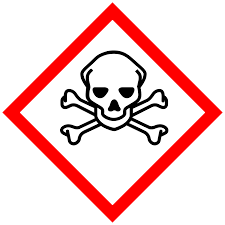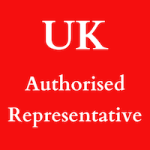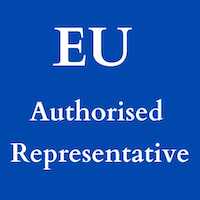TPD Compliant: What does it mean?
What does it mean to be TPD compliant?
If you are an importer or manufacturer of e-cigarettes or e-liquids, your products must be TPD compliant before you can sell in the EU. But what does it mean to be TPD compliant and how can Medic Pro help?
What you’ll learn:
- Key rules of TPD and how we can help
- Background: How the TPD came about and what its aims are
- Is TPD a legal requirement?
- TPD loopholes: short fills and extension tubes
- Do you need a licence to sell e-liquids?
- Annual Sales Reporting: What should be in the report? When and how should you submit it? What if the report is late?
- Penalties for TPD non-compliance
- Vigilance: What is it? The legal basis and how we can help.
“The regulatory support we’ve received over the past two years has been fantastic. It has been professional and reliable and the best we’ve found. From assisting us with the notifications to e-liquid testing they’ve helped get us TPD compliant and even saved us money. We will continue to get their advice on all regulatory matters.”
Sam – General Manager – UK Eliquid Manufacturer
The Tobacco Products Directive – or TPD – sets out the rules for the sale and manufacture of e-cigarettes and e-liquids in the EU. It came into effect in May 2016. Any product must be fully compliant with TPD regulations before it’s placed on the EU market.
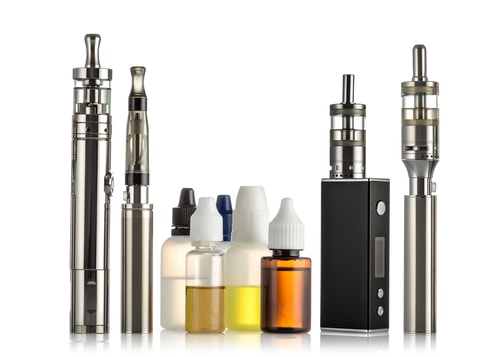
E-cigs and e-liquids must comply with the TPD.
The key rules of the TPD include:
1) Product characteristics: New products must comply with requirements relating to their design. These include the size of bottle (max. 10 ml), tank size (max. 2 ml), child-resistant/tamper-evident packaging and refill mechanism technical rules.
2) Notification: Product information – for example, product characteristics, formulation/toxicology and emissions – must be submitted to the MHRA via the EU-CEG portal prior to product launch.
Want to learn how to build and submit TPD notifications? Watch our EU vape regulation course here.
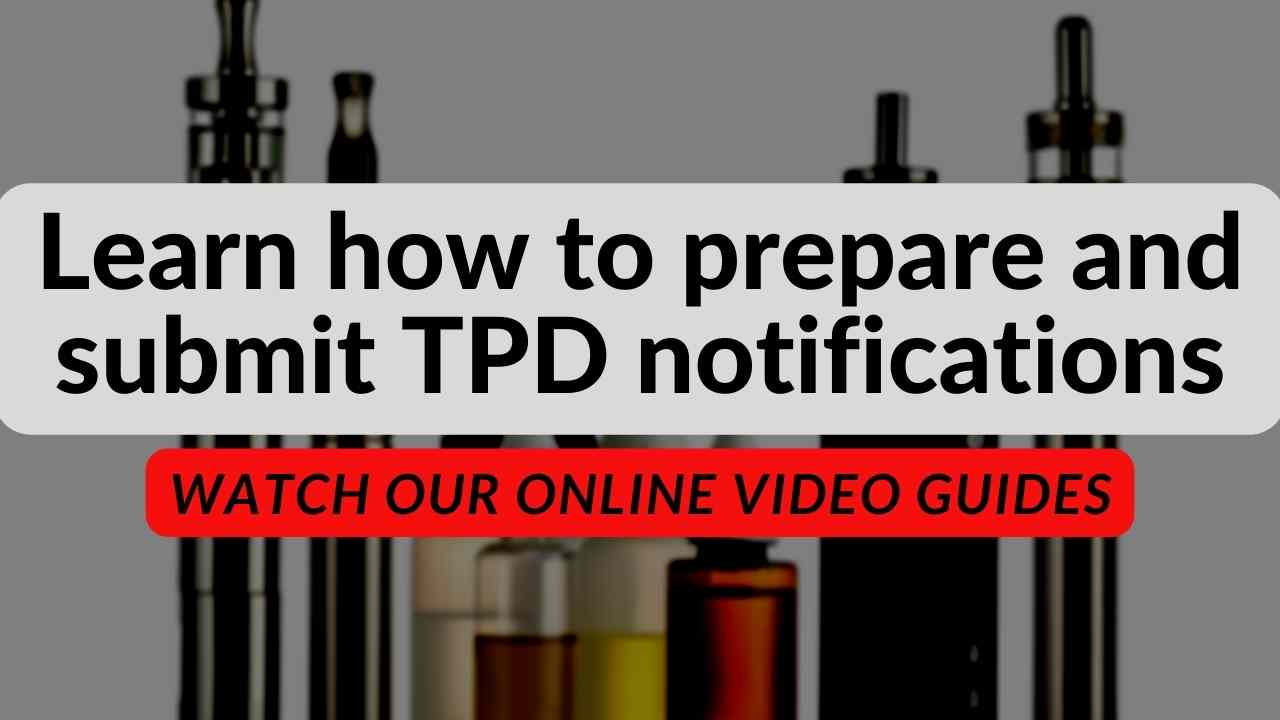
3) Packaging and labelling: There are new rules about packaging. For example, a health warning must appear on the label, and certain warnings and precautions must appear in the leaflet. Each EU member state health warning which must be in its native language.
CLP regulation is an important part of compliance for e-liquids.
4) Classification of labelling and packaging rules (CLP): With e-liquids, there are rules on the labelling of mixtures that are separate and pre-date the new vape laws. These include the requirement for an exclamation mark or skull and crossbones pictogram, and precautionary statements.
5) Producer registration: Companies must register with the authorities (where applicable) to sell directly to customers via the Internet.
How can we help you get TPD compliant?
1) Product characteristics: We can conduct a full review of the product’s characteristics to check it’s TPD compliant. We’ll go over the TPD regulations, helping you understand whether your product meets the packaging rules, and can review the refill mechanism and make sure it meets technical requirements.
2) Notification: We’ll support you to make a notification, offering advice and guidance on notification requirements such as toxicology and emissions testing, and help you submit through the portal. Or let us do the hard work for you – we can notify your products on your behalf. We’ll even take care of the emissions testing (also known as a ‘TPD test‘) via an independent specialist analytical laboratory.
3) Packaging and labelling: We provide country-specific information, so you can make sure your packaging complies with the rules in each member state. We’ll also advise on whether the health warning should appear on the outer carton, the label or both (this differs from market to market).
4) **Classification of labelling and packaging rules
(‘CLP’):** We’re trained in the CLP and can offer advice on the warnings and precautionary statements that should appear on the pack. We can also advise on where to place the tactile warning.
5) Producer registration: Click here to learn about how to register a vape product in the UK with the MHRA
How did the TPD come about?
The EU introduced the new rules as a revision to previous laws, which had been in place for over a decade and no longer reflected the latest scientific and market developments.
The TPD was designed to harmonise the laws of tobacco and related products (roll-your-own, cigars, e-cigarettes) across the EU. The new laws form part of wider tobacco policy aimed at reducing youth uptake of smoking and supporting smokers to quit. The TPD was expected to have a positive effect on both.
What are the aims of the TPD?
The TPD aims to:
- Update and harmonise legislation for the control of tobacco, and establish a regulatory framework for related products.
- Reduce smoking by preventing tobacco products from using ingredients or presentation that encourage young people to take it up.
- Fight illicit trade by introducing an EU-wide tracking and tracing system for the legal supply chain, and a security feature that combines both visible and invisible elements.
- Establish a regulatory environment for e-cigs and e-liquids to make sure they meet safety and marketing standards.
Is the TPD a legal requirement?
Yes – with exceptions. E-liquids only need to comply with the rules of the TPD if they contain nicotine. For devices, things are a little more complicated. All devices fall within the scope of the TPD – however, not all a device’s components need to be notified. Components that are unique to e-cigarettes (like tanks) need to be notified, but generic parts like batteries (‘mods’) don’t.
If you’re not sure whether your component falls within the scope of TPD, get in touch with us.
Are there any TPD loopholes?
There are several TPD loopholes that are commonly exploited – we’ve explained two of them below.
Short-fills (‘shake and vape’)
1) An e-liquid only needs to comply with TPD if it contains nicotine. The TPD only applies to nicotine-containing e-liquids. To get around this rule some manufacturers have launched a range of ‘short-fills’ or ‘shake and vape’ products.
Short-fills are nicotine-free refills typically sold in 100ml bottles. They’re under-filled by the manufacturer so customers can fill the bottle up with nicotine-containing e-liquid after they’ve bought it.
A consumer can purchase the short-fill together with a nicotine-only (no flavour) e-liquid (a ‘nic shot’) and combine the two to make a nicotine e-liquid refill.
Because short-fills don’t contain nicotine, TPD rules don’t apply. This means manufacturers can avoid things like restrictions on bottle size and notification requirements.
Short-fills exploit a key TPD loophole
What do the health authorities say about short-fills?
Health authorities interpret the TPD differently throughout the EU. Most agencies don’t regulate short-fills under TPD rules, although some do. The UK’s authority, the MHRA, has said they will not regulate short-fills because they don’t contain nicotine, and that manufactures and importers should comply with General Product Safety Regulations (GPSR) instead, which, in order to comply, requires lab testing.
Read more about short fill regulation here.
Tube Extenders
2) Manufacturers can sell a tube together with a TPD compliant tank. The TPD restricts tank size to 2ml. Some device manufacturers sidestep this rule by including a tube in the kit, which can be assembled with other parts to form a tank larger than 2ml. The fact the tube is not a tank means it doesn’t need to comply with the TPD size restriction.
What do the health authorities say about tubes?
Again, interpretations differ across Europe. Some agencies are seeking to close the tube TPD loophole in their country, while others don’t specifically address the issue. Agencies may challenge the manufacturers and importers on the issue and ask for an explanation of how the product complies with the rules.
In the UK, the MHRA has emailed companies who have submitted TPD notifications with the following statement:
Tanks above 2ml
Products found to contain non-essential elements that temporarily alter maximum tank size, such as plastic plugs and bungs, will be subject to review if currently notified. Products found to feature a maximum tank capacity above 2ml will be removed from the published list.
Squonk box mods
A ‘squonk’ is a box mod that comprises a battery and a reservoir or bottle. This enables users to feed the attached RDA bottom-up instead of dripping from above. To add e-liquid to the RDA, the user depresses the bottle. This pushes liquid up through the bottle nozzle, into the connector and finally into the RDA. The main advantage over the traditional mod is that users can add e-liquid to the RDA more conveniently.
Are squonk box mods TPD compliant?
The problem with squonks is that agencies (such as the MHRA) may consider the reservoir a tank. Under TPD rules, tanks must be under 2ml.
The MHRA has issued a statement (not available online) on squonk box mods :
Squonkers
These products do not meet the requirements of the regulations if supplied with a squonk bottle/reservoir or tank by any other name with a capacity above 2ml. Any refill containers supplied with a squonker must comply with the associated regulations.”
So the answer is no – squonk box mods are not TPD compliant.
Do you need a licence to sell e-liquid?
No – but you may need to register your business with an authority in the country you’re selling in.
Who needs to register?
Registration rules differ from market to market, but typically you’ll need to register if you sell nicotine-containing e-liquids online to other EU states (see cross-border distance sales below). In most markets, you don’t need to register if you sell only in your own country.
What does TPD registration involve?
TPD registration involves submitting information about your business to the agency responsible for vape products. The process is relatively quick and easy – it should take no more than an hour to complete the form. Get in touch with us if you have any questions about the registration process.
Cross-border distance sales
The TPD sets out rules on cross-border distance sales of e-cigarettes and e-liquids. These laws give EU member states the option of prohibiting cross-border distance sales.
For example, the UK has the option of banning UK businesses from selling e-cigarettes and e-liquids to other member states (e.g. via the internet, telephone or post), and other member states from selling these products to consumers in the UK.
Member states that choose not to prohibit cross-border distance sales are obliged to have a registration scheme for any retailers that engage in them.
Register with the MHRA
The UK has opted to allow cross-border distance sales, but companies engaging in these sales must register with the MHRA.
This means that UK retailers selling e-liquids online, by phone or by post to consumers in other member states (that have chosen not to impose a ban) must register with the MHRA and the authorities in the member state the consumer is based in.
Non-UK businesses selling to UK consumers must also register with the MHRA.
Annual Sales Reporting
Under Article 20.7 of the TPD, vape businesses are required to submit an annual report with sales information to the agencies. The report should relate to sales in the previous year. Rules on annual reporting differ slightly market-to-market, but the main points are below.
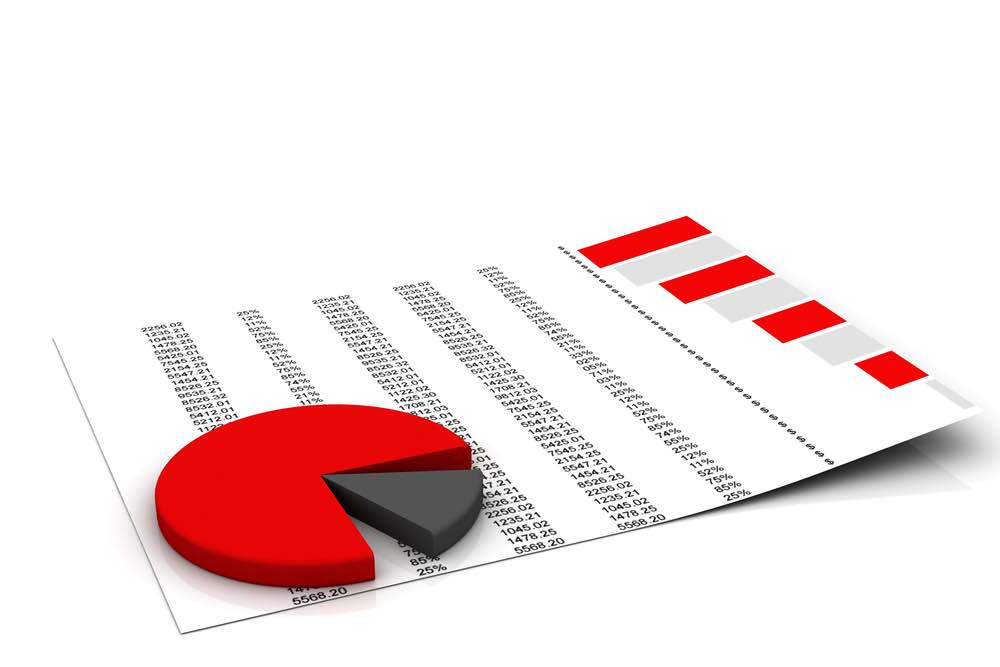
What information should be in the annual report?
- Sales volumes: State the number of units sold (for multi-packs, count the number of individual units)
- Mode of sale: Indicate how the product was sold – via website, through distribution channel, retail outlet etc.
- Market surveys: What market research has been done on your products/brand? What do customers like about a product? Provide a summary of the findings in the report.
- Consumer preferences: Who typically buys your products? They may be ex-smokers in their thirties, for example.
When should I submit the report?
The deadlines for submitting the report differ across the EU. The UK wants the report by May, whereas in Germany it’s June. Some agencies have asked for the report as early as March.
How do I submit the information?
Again, rules differ across the EU. Two options are available:
1) Submit the report through the EU-CEG portal (this is also where you submit notifications).
2) Submit it directly to the agency by email. The UK asks that if you submit the report via the
portal, you also email a copy as well. We can advise on country-specific requirements – contact us for more information.
Do all products need to be in the report?
No – you only need to include notified products.
What happens if I don’t submit the report, or it’s late?
It depends on the market. Some authorities charge a penalty fee if you don’t submit the report or it’s overdue. However, it’s unlikely to get to that stage as the requirements are still quite new.
Why do they want the data?
Ultimately, the authorities are trying to find out whether vaping leads to nicotine addiction and/or smoking in the young and non-smokers. They’re collecting the sales information as part of their research into vaping and the ‘gateway effect’.
Do you feel you lack the required information? Don’t panic!
We’re experts on the requirements across the EU, and can help you submit quickly and efficiently.
Penalties for non-compliance
What are the penalties for non-compliance with the TPD?
Vape businesses can receive penalties for not complying with the provisions in the TPD. In the UK, a vape business could receive a penalty for any of the following offences:
- Failure to adhere to rules on product characteristics
- Failure to submit a notification
- Failure to establish and maintain a vigilance system
- Failure to inform the MHRA if a manufacturer has reason to believe that an e-cig or refill container is not safe, of good quality, or compliant with the rules.
- Failure to immediately take corrective action to bring product into compliance (or withdraw the product, recall the product).
- Failure to comply when any Member State asks a producer to provide information on the safety and quality aspects or any adverse effects of electronic cigarettes or refill containers, by a reasonable date.
- Failure to inform MHRA, and an authority of any Member State in which the product has been supplied, details of risk to human health, among other things.
The severity of the penalty will vary between Member States. But in the UK, a person found guilty of an offence can lead to maximum 2-year imprisonment or a fine, or both.
Provided the vape business addresses the compliance issues in a timely manner and communicates with the health authority it is unlikely to lead to a penalty as severe as imprisonment. A TPD consultant can facilitate the communication and support the producer to correct the issue.
Useful Links
Which lab should you use for e-liquid testing?
What should appear on the e-liquid warning label?
Read our notes on the TPD Requirements.
Get a product notified.
“The regulatory support we received over the past 2 years has been fantastic. It has been professional and reliable and the best we’ve found. From assisting us with the notifications to e-liquid testing they’ve helped get us TPD compliant and even saved us money.”
Sam (UK E-liquid Manufacturer)
9 Things You Don’t Need To Be TPD Compliant
Lots has been written about what you need to do to comply with TPD. But what don’t you need? What is NOT required? Little is said on this topic but it is equally important.
Some of the things that are not requirements of the TPD are explored below:
1) Lab testing at an MHRA/FDA Approved Lab
Sending e-cigs to be tested at a lab that has been ‘approved’ by the MHRA or FDA is not a requirement of the TPD. And it is unlikely to ever be a requirement.
But vape products should not be tested at just any lab. When sourcing a lab to do your testing, you should check:
- Independent from the vape industry: Check that the lab has no ties with manufacturers or other vape businesses. Why? Because your test results should be treated as confidential and should only be known to the lab, your company and the authorities.
- Well-established: Ensure that the lab has been around for a few years and works in different sectors, such as pharmaceutical or agrochemical.
- Language: We recommend testing using labs in the UK because the test generates a report that needs to be understood by the agencies in the EU. English is the common language in which all agencies can communicate.
- There may come a time when the results are published but not for some years.
- Ideally, translations into the native language would be beneficial.
2) ‘TPD Certificate’ or ‘Approval by agency’
There is no such thing – the authorities (MHRA) will not issue you with a TPD certificate nor ‘approve’ the product. In the case of the UK authority, the MHRA, they will do some basic compliance checks and simply indicate that the manufacture ‘declares’ compliance with the TPD.
What does this mean?
It means the onus is on the manufacturer to confirm that the product complies with the rules for the TPD rather than the health authority issuing an ‘approval’.
What checks do the agencies make?
Each agency is different. The MHRA make a number of basic checks to ensure the essential elements of the notification are included. They do not disclose what exactly they check but from our experience, they will check that, at least, the tox and emissions data broadly complies with the TPD requirements, and declarations are included, among other admin information.
3) E-liquid Analysis by GC-MS and ‘screening’
E-liquid analysis by GC-MS is not strictly a requirement of the TPD but the picture is a little more complex. It really depends on your circumstances – if you manufacture or import, for example. We help our clients decide if testing is required.
4) GC-MS on e-liquid composition (formulation)
An attempt to identify the chemical composition and quantities of an e-liquid with a sufficient degree of accuracy is, in most cases, futile and not worthwhile. The only way to really know the ingredients and quantities in an e-liquid is to know the formulation.
5) Nicotine delivery per dose for e-liquids
An emissions test to check the amount of nicotine delivered per dose (sometimes seen on e-liquid bottles as 0.1 mg per puff) is not required for e-liquids but it is for devices.
Why not? Many factors play a part in the amount of nicotine delivered per dose – the e-liquid is one but other factors play a more important role, for instance, the device.
Nicotine delivery per dose is a requirement for devices (which should be printed on the pack).
UPDATE: Manufacturers may wish to include nicotine delivery per dose on e-liquids to avoid questions from Trading Standards (in the UK).
6) Good Manufacturing Practice
Good Manufacturing Practice is not a requirement of the TPD. The TPD does not state GMP as a requirement and the manufacturing standards in development are unlikely to require it.
GMP is required for the manufacturing of medicines and standards for e-liquid manufacturing currently in development are expected to raise the bar closer to the medicines standard. But, in our view, they will fall short of a requirement for GMP.
7) Quality Management Systems (QMS)
QMS (e.g. 9001) is not a requirement of the TPD. Businesses may wish to implement a QMS for operational improvements or credibility reasons but the TPD does not require companies to have one.
The TPD does state that manufacturers and importers keep a system for collecting suspected adverse events which is different to a QMS. (See our Vigilance page).
8) Health Criteria Values (HCVs)
For peace of mind, a manufacturer may want to get HCVs for e-liquids – but these are not a part of TPD compliance.
9) Toxicological Risk Assessments (TRA’s)
TRA’s are not a requirement of the TPD. But again, for peace of mind, a manufacturer may prepare one.
What tox is required?
Information in the literature search on the available toxicological information on each ingredient should be presented. Read more here.
Vigilance
What is Vigilance?
The term ‘Vigilance’ has been used by the UK Department of Health/MHRA to describe the system whereby safety issues of marketed products are monitored, assessed and reported. It is an important part of TPD compliance.
The Legal Basis
Article 20 (9) of the TPD requires Member States to ensure that manufacturers, importers and distributors set up a system for collecting information about side effects of vaping. Businesses are also required to inform the authorities of any risks to public health should they emerge on a given product.
How a Vigilance system works
Vigilance Person
Producers in the UK should appoint a competent person with the role of Vigilance. Their main responsibility is to immediately notify the authorities should a change occur in the safety profile of a product. Other tasks include maintaining and managing the Vigilance system and ensure that all information about suspected adverse events are collected and organized.
Product Overview
For each product an overview of the potential and emerging health concerns should be identified. In the case of e-liquids, the overview may include reports of the toxicological studies on the flavour compounds which should be updated when new studies are published.
Documentation
An important element of Vigilance is documentation; all aspects and activities of the vigilance system should be described. Documentation may be subject to inspection by the MHRA or Trading Standards.
How can we help?
In the absence of Vigilance guidance for e-cigarette products the pharmaceutical equivalent can be a model. We help producers establish and maintain a Vigilance system based on this model.
About Medic Pro
What We Do
We are a London-based regulatory affairs consultancy providing services to the e-cigarette, cosmetic, biocide, pharmaceutical and medical device industry. We help e-cigarette companies comply with the Tobacco Products Directive and pharmaceutical companies obtain and maintain medical product licences. We also offer UKAS accredited biocide and analytical testing services.
